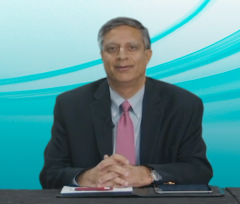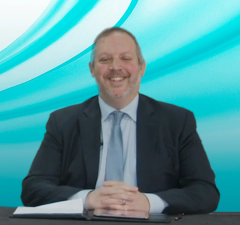
Unmet Needs and the Future of Multiple Myeloma
Experts muse on the unmet needs of multiple myeloma, and exciting investigational therapies on the horizon.
Episodes in this series

Sagar Lonial, MD: Dr Joseph, there are a couple of other new targets coming out that everybody should have on their radar. Do you want to give us a short summary?
Nisha Joseph, MD: Sure. I’ll highlight a few. Many were highlighted at the last ASH [American Society of Hematology Annual Meeting]. First, we can start with iberdomide, which is a novel CELMoD [cereblon E3 ligase modulator] agent with more potent immunomodulatory effects and a more favorable safety profile. Looking at that ongoing phase 1/2 study that you presented looking at lenalidomide and dexamethasone in relapsed/refractory myeloma, patients were heavily pretreated. Almost all patients were triple-class refractory and showed an overall response rate of about 20% or 25%. Those studies are ongoing with different arms looking at iberdomide and dexamethasone with other novel agents.
I also want to highlight bb21217, which is using the ide-cel [idecabtagene vicleucel] CAR [chimeric antigen receptor] construct with the addition of a PI3 kinase inhibitor with the intention of enriching for memory-like CAR T cells and showing good depth of response. Notably, there’s a correlation between patients who have persistent memory-like T cells and those having the longest responses. Lastly, we talked about talquetamab. It’s important to note that we have a CAR T in study targeting GPRC5D, which is so important to have. As we’re using more BCMA-targeted agents, it’s important to have options for patients at progression utilizing other targets.
Sagar Lonial, MD: The way that I think about it, getting back to our original comment in this discussion, [is that we] don’t save good drugs for later. In myeloma, we’ve always got a pretty strong pipeline of new drugs coming through. Even if you run out of approved drugs, we’ve always got a pretty big clinical trial opportunity. That’s something as a group that we’ve been proud of, that we can provide access to those things to people in our community.
This has been a wonderful discussion. Thank you all for joining us. I want to take a moment to get closing thoughts. Let’s start with Dr Kaufman.
Jonathan Kaufman, MD: Although we still have a lot to learn, we know that patients can live a long time with myeloma. We’re developing new drugs and starting to have conversations about bringing these new drugs, like CAR T cells and bispecifics, much earlier in the [disease] course and truly changing the natural history of myeloma.
Sagar Lonial, MD: Dr Joseph?
Nisha Joseph, MD: Another good point to make is that even though we’re seeing significant improvements in outcomes and we have many new therapies, either approved or in the pipeline, there remains an unmet need in our high-risk patients. There’s still a lot of work to be done there with these new immunotherapies and treatments in how we combine those regimens and utilize them to optimize outcomes in all our patients, particularly that high-risk subset that remains challenging.
Sagar Lonial, MD: Dr Nooka?
Ajay Nooka, MD: The last 10 years have been an amazing experience for me. I saw firsthand the myeloma drug development and what could happen in terms of how these drugs could impact the patient’s life expectancy. It’s a phenomenal exercise. What I expect to see in the future is using all these available drugs to attain the word cure, which is within reach and can be possible with 3 existing things. No. 1 is the cellular therapies and existing small molecules in development. No. 2 is the sensitive techniques Dr Kaufman talked about before, the blood based and bone marrowbased, in which we potentially have the ability to identify patients who can come off treatment. No. 3 is the longitudinal follow-up of these patients over a longer period to talk about what can be expected as far as a new life expectancy and new benchmarks.
Sagar Lonial, MD: I can’t say it any better than my colleagues already have. I don’t think I have much more to add. Thank you to our faculty for joining us in this lively discussion on the treatment of patients with multiple myeloma, brought to you by Cancer Network®. Thank you to our viewing audience. We hope you found this interactive discussion to be informative and beneficial to your clinical practice.
Transcript edited for clarity.
Newsletter
Stay up to date on recent advances in the multidisciplinary approach to cancer.


























































































